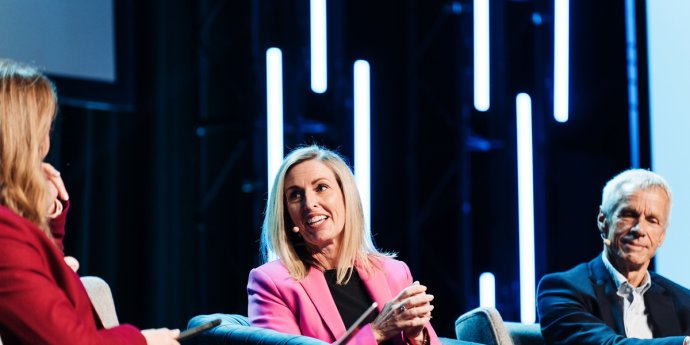Getting to know the CEO

Outgoing Auckland Airport chair Patrick Strange CFInstD stresses the importance of protecting the CEO relationship.
In March, Patrick Strange CFInstD announced his intention to retire as chair of Auckland Airport at the company’s annual shareholder meeting in October.
The succession had already been decided. In the same notice announcing Strange’s upcoming departure, former Institute of Directors’ (IoD) chair and president Julia Hoare CFInstD was named as the person to step into the role.
But succession planning doesn’t necessarily end with an appointment. At the IoD’s 2024 Leadership Conference in May, Strange and Auckland Airport chief executive Carrie Hurihanganui shared how the important chair/CEO relationship is being protected through the succession process.
The Four Pillars of Governance Best Practice describes the chair/CEO relationship as crucial to an effective, well-functioning board. The interaction of the chair and CEO sets the tone for the relationship between the board and management interaction.
The Four Pillars recommends this relationship be based on mutual support, respect and trust. It also notes the chair and CEO should present a unified perspective and shared purpose in public and operate on a ‘no surprises’ communication principle and that ensuring there is a strong, effective relationship with the CEO is a key aspect of the chair’s role.
While that relationship is a professional one, it is also a relationship based on personality, which makes the succession of a new chair a potentially fraught process, from a CEO’s perspective.
“There are things that we know are going to play out in the back half of this year, and into next year.”
At the Leadership Conference, Strange stressed the value in protecting this relationship during a time of change. Succession planning for a chair is a long process and there are things you can do to make the transition as smooth as possible.
For Strange, this includes working with Hoare where decisions will impact the board she inherits. “I still run the meetings,” he said, “but on things like looking for new directors, I’ll make sure the new chair is aware, and almost leading it because it’s someone for their board.
“If there was something in terms of board, committee appointments or board performance coming up, we would do that together and we’d do it quite a long way out. We are just going through a board review, and I’ll probably work alongside Julia on that so it’s an easy transition. We’ve worked together for a while; we know and respect each other,” says Strange, describing this process as friendly, mature and respectful.
Alongside interactions with Strange, Hoare is already building a relationship with Hurihanganui, who has an open-door approach to board members who want to sit down and discuss matters.
For Hurihanganui, beginning to build the chair/CEO relationship means understanding what the new chair is expecting, and what Hoare’s thinking is on upcoming major projects and board decisions.
“There are things that we know are going to play out in the back half of this year, and into next year,” Hurihanganui said. “I share that with Patrick and then we agree, ‘hey, that’s something for Julia and I because it is part of the future state’. It’s kind of pragmatic, in terms of that.”
“We don’t really want the CEO appointing directors. That’s really upside down. If you have an organisation that’s doing that, and it might happen in America, your governance, I think, is wrong.”
Establishing trust and understanding now will make the transition as seamless as possible, from the CEO’s perspective, she said.
“It’s a strong existing relationship [with Hoare], albeit in a different capacity, that will naturally transition over the next six months.”
This is an extension of the approach Hurihanganui takes to all board members – the traditional ‘no surprises’ ideal.
“I regularly drop an email update to the board so everybody’s on the same page, at the same time, with what’s happening. Patrick’s also comfortable for me to engage directly with board members on their subject-matter expertise.”
While communication between the board and CEO is relatively open, the separation between board and management roles is maintained. Asked from the floor if the CEO should have input into appointing directors to the board, Strange was unequivocal.
“No,” he said. “I mean, you should be sensitive. You don’t want to appoint someone they’re not going to like. That’s not going to work.”
But, fundamentally, the people who appoint the directors are the owners, the shareholders, and that must be respected, he said.
“We don’t really want the CEO appointing directors. That’s really upside down. If you have an organisation that’s doing that, and it might happen in America, your governance, I think, is wrong.”